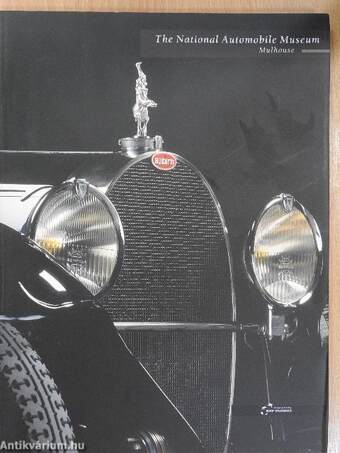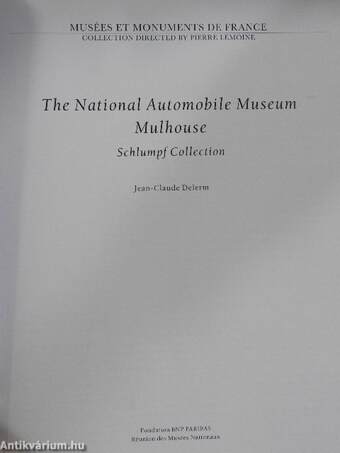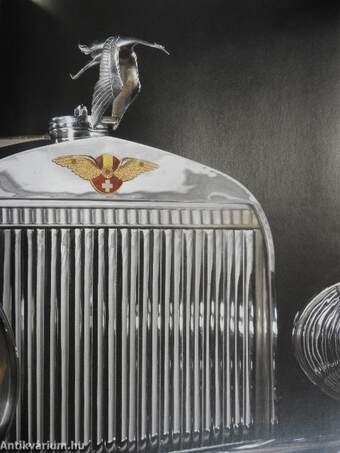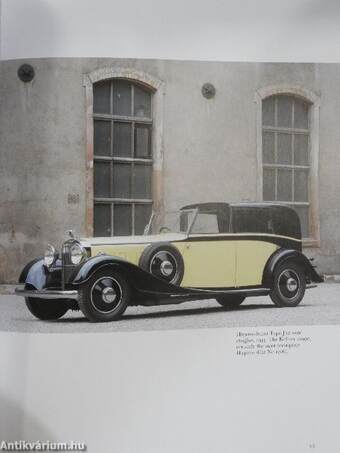1.067.317
kiadvánnyal nyújtjuk Magyarország legnagyobb antikvár könyv-kínálatát

VISSZA
A TETEJÉRE
JAVASLATOKÉszre-
vételek
The National Automobile Museum Mulhouse
Schlumpf Collection
| Kiadó: | Fondation BNP Paribas-Réunion des Musées Nationaux |
|---|---|
| Kiadás helye: | Párizs |
| Kiadás éve: | |
| Kötés típusa: | Fűzött papírkötés |
| Oldalszám: | 126 oldal |
| Sorozatcím: | Musées et Monuments de France |
| Kötetszám: | |
| Nyelv: | Angol |
| Méret: | 28 cm x 21 cm |
| ISBN: | 2-907333-66-6 |
| Megjegyzés: | Színes és fekete-fehér fotókkal. |
naponta értesítjük a beérkező friss
kiadványokról
naponta értesítjük a beérkező friss
kiadványokról
Előszó
The Mulhouse National Automobile Museum (Schlumpf Collection) was created at the end of 1981. Its collection helps to clarify and deepen our understanding of all cultural aspects of the automobilé,... TovábbElőszó
The Mulhouse National Automobile Museum (Schlumpf Collection) was created at the end of 1981. Its collection helps to clarify and deepen our understanding of all cultural aspects of the automobilé, as both technical object and fact of social life. Based on the celebrated Schlumpf Collection, the Mulhouse Museum is a place of quite incomparable richness and interest. But, in addition to the straightforward pleasure of diseovery that it offers its visitors, the Museum goes a great deal further. Certainly, the most obvious aspects are its educational activities, as well as the restoration of vehicles and their return to active use. Less obvious but no less important, the rapid establishment of a library of important documentation allows researchers to gather together all useful information on the vehicles displayed. The motor vehicle entered society at the end of the igth century, and has become much more than just a simple object. It can take on any of the characteristics emanating from our enthusiasms or our aversions. It is possible to say that the automobilé is costly, noisy, dirty, unwieldy, slow, irritating, ugly, intrusive, unstable, dangerous, aggressive in a word, a liability. But that would be to forget that it can alsó be beautiful, fast, liberating, pleasurable, comfortable, accessible, dependable, exciting, silent, economic - in other words, an indispensable asset. It is hard not to see in the automobilé one of the major events of the 20th century, at once the agent of the most infuriating hold-ups and the most tender meetings. Few objects in our lives have such presence for us, such complicity, such a part to play in all our joys and woes, simultaneously freeing and enslaving us. It is not surprising, therefore, that this Museum should aim to become a true centre of automobilé culture, with the extent of its collections reflecting the magnitude of the subject they cover. Other factors, such as the riches of this particular city and of its other museums, are alsó relevant. Born of a complex history and agreeably located at a crossroads of valleys, civilisations, and influences, Mulhouse naturally assumed an industrial identity at the beginning of the igth century. This centre of textile, mechanical, mining, and energy-producing industries has created skills, concepts of society, and united heritages of all types, making this city the premier French centre for technical museums. The Automobile Museum has several important neighbours, among others the French National Railway Museum, The National Museum of Electrical Energy (Electropolis), the Textile Print Museum, and the Museum of Wallpaper. These diverse themes of transport, textiles, and energy interact and enrich one another, giving Mulhouse a potential and a dynamism in constant growth. VisszaTartalom
The Place and the People 9The Birth of the Automobile 21
The Dream Cars 33
CompetitionCars 73
Everyday Cars 97
Beyond the Collections 113
Glossary of technical terms 124
Index 126
Bibliography I27













